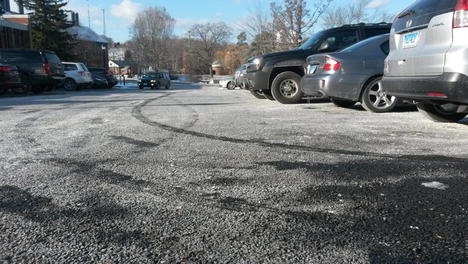Road salt is inescapable during a Northeast winter. Applied as a deicer, it helps prevent accidents, slips and falls. Salt lowers the freezing point of water, accelerating melting and keeping ice from forming when temperatures drop. Despite the benefits to transportation and safety, road salt has serious environmental impacts and presents hazards to human health. Researchers at UConn have recently completed two studies on the Storrs campus, examining how deicers interact with areas surrounding permeable surfaces and discovering a potential radioactive danger.
Mostly a combination of sodium and chloride, road salt chemicals can flow into surface and ground water impacting aquifers, wells, wildlife, flora and drinking water. While these effects have long been publicized, road salt continues to be heavily used due to its low cost and a lack of viable alternatives. The increased use of storm water management systems, particularly in urban settings, has renewed questions about how these contaminants travel and affect the neighboring environment.
A team of UConn researchers, including Professor Gary Robbins of the Department of Natural Resources and the Environment (NRE), Assistant Extension Educator Dr. Mike Dietz of the Department of Extension and NRE graduate students Derek Angel and Lukas McNaboe, investigated how the installation of one popular storm water management system, permeable asphalt, affects road salt contamination of groundwater.



